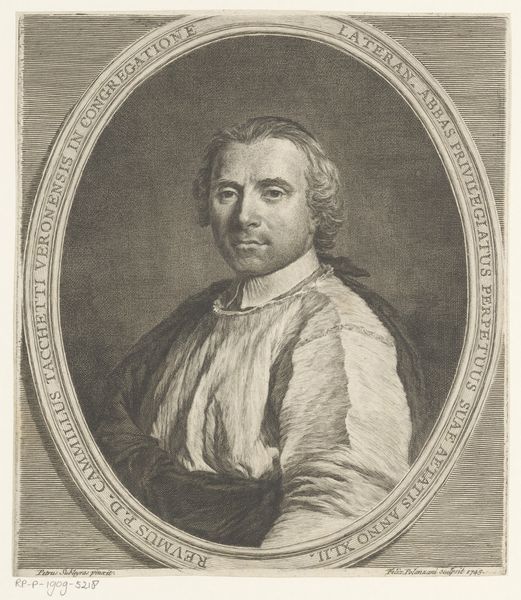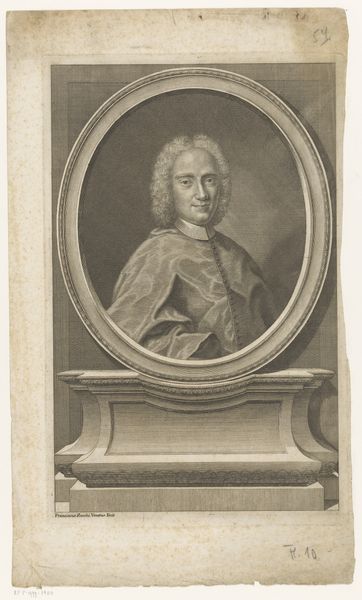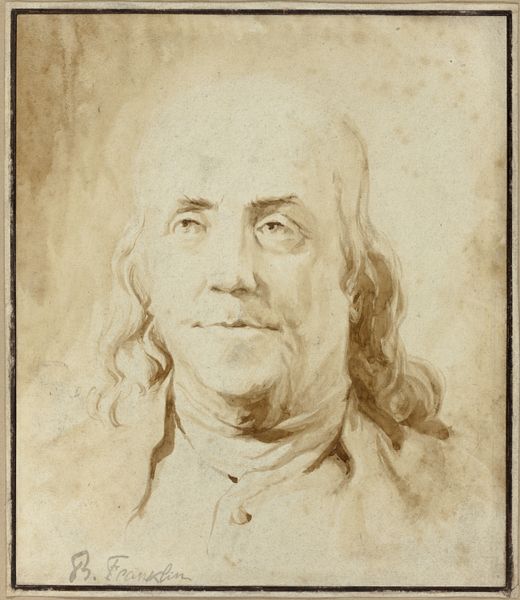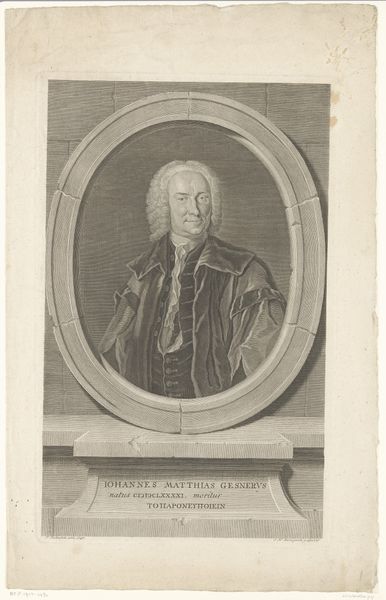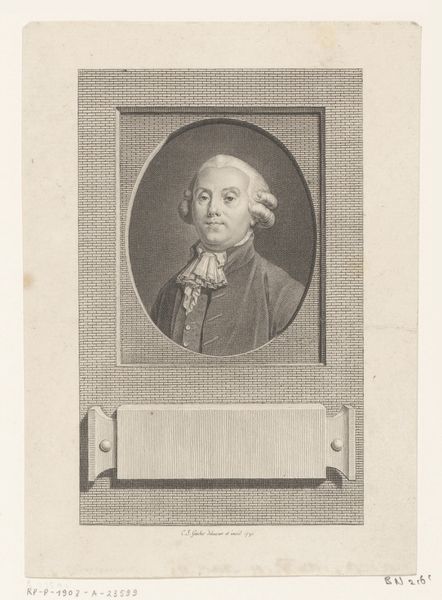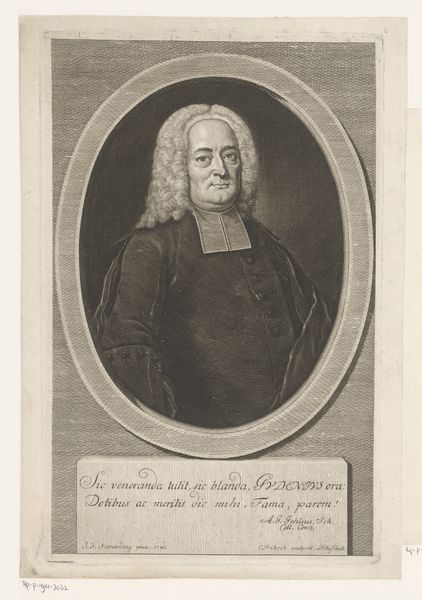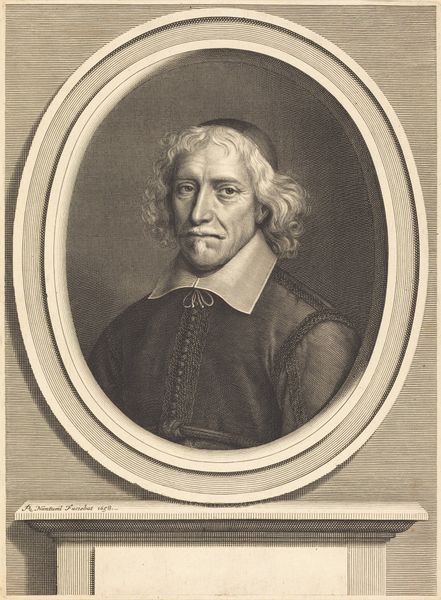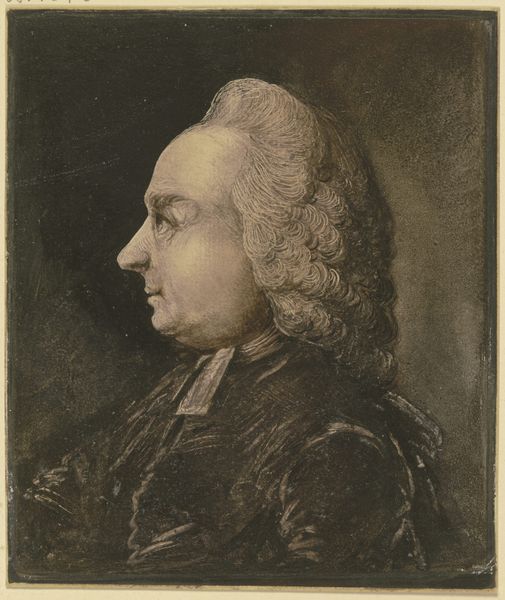
drawing, print, mezzotint, charcoal
#
portrait
#
drawing
#
baroque
# print
#
charcoal drawing
#
charcoal art
#
oil painting
#
portrait reference
#
mezzotint
#
portrait drawing
#
charcoal
#
portrait art
Dimensions: 614 mm (height) x 460 mm (width) (plademaal)
Curator: Here we have Jakob Christof Le Blon's portrait of Cardinal André Hercule de Fleury, likely created between 1667 and 1741. This print resides in the collection of the SMK, the Statens Museum for Kunst. Editor: The textures in this piece immediately strike me – particularly in the Cardinal’s robes. The mezzotint almost gives the fabric a velvety sheen. It looks incredibly tactile. Curator: Le Blon was quite innovative. Though identified as a print, the artwork utilizes a range of materials, including mezzotint, drawing and charcoal to construct an imposing depiction of Fleury, who was a hugely influential figure in the court of Louis XV. Editor: Influential indeed. Look at the way light and shadow are manipulated across his face. It really emphasizes the textures of his skin. It draws your eye into his gaze. He's someone who wielded power, but the texture hints at fragility as well. Curator: Yes, the visual representation certainly reinforces Fleury's role. His leadership as Bishop of Fréjus and later as a Cardinal meant wielding considerable socio-political and religious influence in France. He essentially governed the country for many years, making the Crown's policies. Editor: It makes me think about the labor involved in creating a mezzotint like this. The initial roughening of the plate, the careful burnishing to create the image...it’s a very deliberate, subtractive process. Curator: Absolutely. This image, initially functioning as a representation of authority and power, would have circulated widely, solidifying Fleury's image and legacy through its material presence. The distribution was definitely intended to bolster his image as a man of power, a clear piece of Baroque political imagery. Editor: And now, centuries later, we're still analyzing the traces of that production, reading into the textures, thinking about the hands that shaped the metal to shape the image. It shows the material endurance of the portrait itself. Curator: A lasting testament to a cardinal, certainly. Editor: Indeed. It's more than just an image; it’s a document of power and a testament to skilled craftsmanship.
Comments
No comments
Be the first to comment and join the conversation on the ultimate creative platform.



